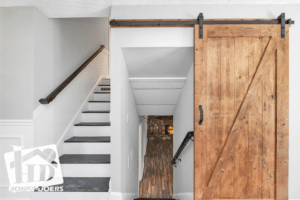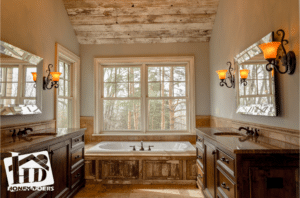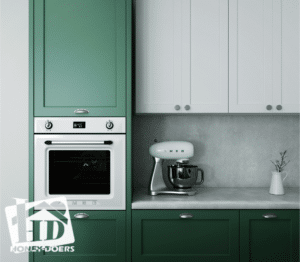The kitchen is the heart of the home. With an open concept kitchen, the entire family can cook and eat together. Fortunately, an open concept design doesn’t have to limit storage space. Here’s a look at how to maximize storage in an open concept kitchen:
Benefits of an Open Kitchen
An open kitchen removes barriers between your kitchen and the adjoining rooms in your house. The open-air design allows the whole family to gather and talk. Plus, an open kitchen design adds a feeling of space even in a small house. Typically, an open kitchen will connect directly to the dining room, living room or other high-use area.
Whether you want a complete kitchen remodel or already have an open concept design, finding storage space in an open design can be a challenge. But solutions are available. Basically, instead of focusing on large cabinets, you’ll use a variety of smaller storage areas throughout the entire kitchen.
Wall and Nook Storage
Open concept kitchens keep cabinets and furniture to a minimum. Instead, you’ll turn to the walls and ceiling for storage space. Hooks or hanging racks provide a lighter alternative to bulky, blocky cabinets.
Hang items above sinks, islands and counters. Hooks work well for pots, pans and other larger items. Hanging racks are better for smaller items such as mugs and cooking utensils.
An item doesn’t need to hang from a hook to benefit from ceiling storage. An overhanging shelf can be installed to hold wine glasses, alcohol and more. Moveable shelves can sit up high when not needed but then be pulled down for easy access.
Separate Areas into Wet and Dry Zones
Food preparation and cleanup can be divided into wet and dry zones. In order to save space, you can separate these areas into different parts of the kitchen.
Dry prep work doesn’t need to be done near the sink. Instead, you can prep on the island. You can also do dry prep work outside the kitchen. The open concept design allows you to easily prep on a nearby dining room table.
Organize Your Pantry
Don’t let your pantry become cluttered with half-filled boxes. Cereals, dry goods, spices and similar materials should be rotated out. Try not to let half-filled boxes and bags clutter up your shelves. Keeping dry goods in glass jars or other containers allows you to throw away unnecessary packaging.
Use a Movable Cart
Add mobile convenience with a wheeled cart. This gives you a cabinet without requiring wall or floor space. You can even use the top of the mobile cart as an additional space for dry prep work.
Add an Island in the Middle of the Kitchen
Most open concept kitchens are based around an island. This is a multipurpose workspace you can use for all types of cooking. Plus, an island can be constructed to accommodate stools, turning the island into an eating area. In most cases, the kitchen island will act as a social center, too.
Use Lights to Divide Room Space
Open concept kitchens stay away from doors and high walls. Instead, you can use lights to divide up the space. For example, adding a row of pendant fixtures can divide the kitchen from other rooms while still allowing for easy foot traffic. Lighting is also often used to make the island a focal point for the entire kitchen.
Use Flooring to Divide Room Space
Flooring is another way to divide up a room without reducing the overall space. For instance, try tile flooring in the kitchen with hardwood floors in the dining room. The different flooring types look good together but contrast enough to divide the entire area into clear sections.
Provide Access to the Outdoors
If your kitchen is on the ground level, consider sliding glass doors. They let you enjoy the view or even open up the kitchen completely on nice days. Netting can be used to allow for fresh air without having to deal with bugs.
Natural light creates feelings of calmness and freshness in any room. Larger windows allow you to capture more light throughout the day.
Add a Touch of Color
While color doesn’t technically increase the space, it can have a dramatic effect on the perceived size of a room. Most open concept kitchens look best with neutral colors. This helps create a feeling of openness.
However, that doesn’t mean you can’t use any color. Weaving a color or two throughout the kitchen can help ground the design. For example, you could use the same color on a backsplash, stool cushions, light fixtures and other small features throughout the room. This adds a fun splash of color without overpowering the feel of the room.
Small doses of bright colors help add a feeling of energy and movement. They’re a good choice if the kitchen is generally small, because the added energy will keep the eye moving around the room. On the other hand, you’ll want to use warmer, earthier colors if the kitchen is really big. This helps a large room from feeling too impersonal and cavernous.
Remove Upper Cabinets
Instead of circling the kitchen with cabinets, use a pantry armoire instead. The lack of upper cabinets opens up the kitchen visually. Plus, it allows the kitchen area to seamlessly blend into the other rooms. In many cases, the dining room table will act as the informal dividing line between the kitchen and the living room.
Think Big with Open Concept Kitchen Design
An open concept kitchen design allows even a small area to feel bright and inviting. While open concept generally focuses on minimal design, there are still numerous ways to store utensils and other kitchenware.
At Honey -Doers, we offer a variety of storage solutions for your open concept kitchen, including complete kitchen remodeling services. Call us today at (952) 985-5383 or use our Fast Form to schedule a free consultation.



